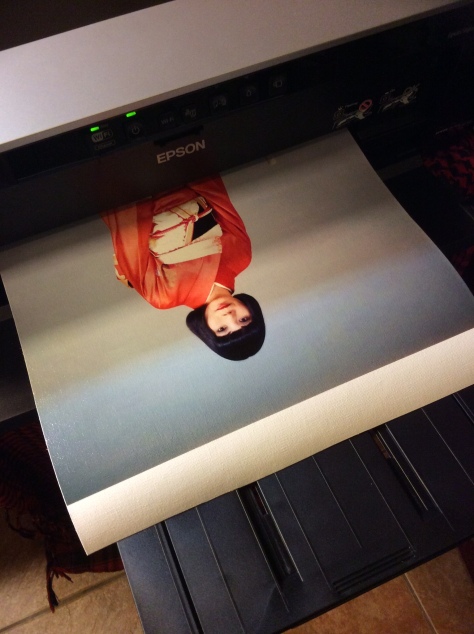Judging from the inscription on the back of this photo, it was taken in 1974 as what I assume was part of a wedding album. This still very young lady is the wife of an old friend, tough mentor and shipmate from my earlier life as a fleet sailor.
His request was simple and welcome. His still remarkable and beautiful wife was retiring and he needed me to restore and enlarge a portrait of her for a surprise party honoring and celebrating her transition from hard working spouse to retired and, most likely, hard working spouse.
I happily agreed to this; never in a lifetime would I have refused such a request. One Christmas while I was stationed in Japan, they had me and several other shipmates come to their home for a party and a very decent meal. I owed, and I owed big time.
Every image restoration has its own challenges, and he gave me an out if it proved to be too much of an effort. This just increased my determination to not only restore the image, but to make it something remarkable.
At first glance I noticed the blue was fading. From all evidence, this picture was treated with care and stored properly. But photographs are tricky and some dyes fade regardless. I have seen many photos where the yellow was fading from exposure to light, giving the appearance of a blue cast. This one was just the opposite. It was an easy fix.
The real problem was in the paper texture. In the 1970’s and 80’s, textured paper was very fashionable. It gave even the most common photograph a feeling of being a professional picture postcard. I have many photos from that time where I specifically requested textured paper, not envisioning some day the advent of digital scanning and media.
The texture presented a problem in that, when scanning, I would pick up the texture as well as the image. A close inspection revealed a honeycomb effect I had to deal with. In the days of Photoshop 3.0, I had a plugin called FFT or Fast Fourier Transform which detected and removed the texture. But now I’m using Photoshop CC and the FFT plugin is nowhere to be found.
There are several techniques to reduce texture in an image, and I used every one of them. Multiple scans and alignment did a good job to start, and several other techniques smoothed out the image, but reduced the detail. The kimono was my guide; I was determined to save as much detail here as possible.

Finally I hit on an idea. If the image was originally on textured paper, why not simply print it again on textured paper? I loaded a roll of acid free canvas into my pigment printer and began the process of soft proofing and color correction. Then I sent it to print. I was not ready for what came out. It was elegant.
I consider this output to be one of the best images I have done. And to my distant friend and much softer mentor, thank you for the challenge.
Fair Seas.



Howard, I will come out from behind the curtain. After all, now I am listed as a contributor. This is Mark Clauda. I was stationed with Howard in Japan on the USS Francis Hammond FF-1067. This ship was made great by the crew on board. This picture and all the work Howard put into it is an example of that feeling still being there. Thank you so much for enlarging and restoring the picture on short notice. It was the first thing my wife’s customers saw when they came into the restaurant to celebrate her retirement. This glorious picture helped to set the mood for the evening. Everyone knew a very special person was being honored.
Again Howard, thank you so much.
.
LikeLike